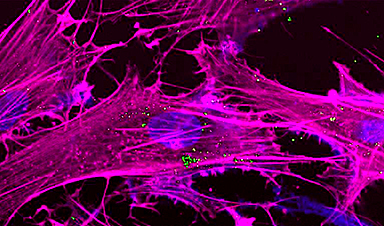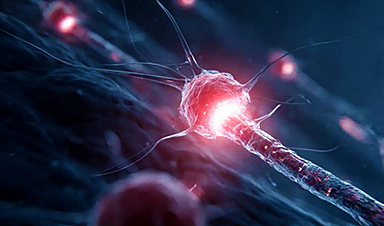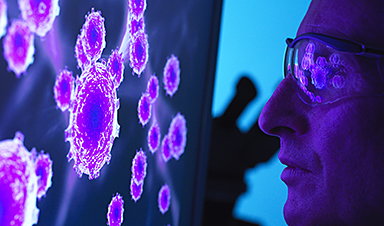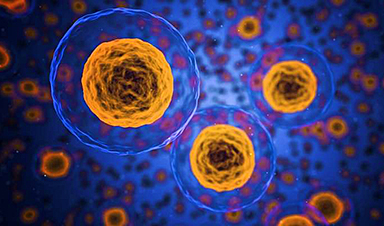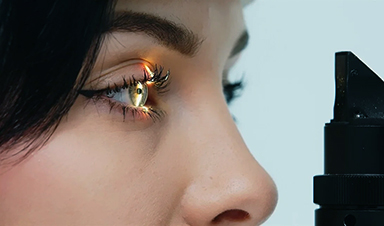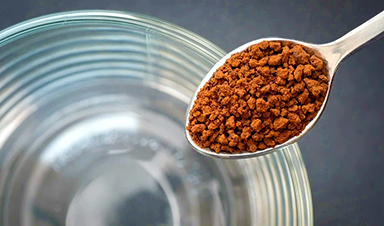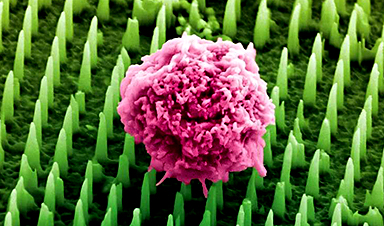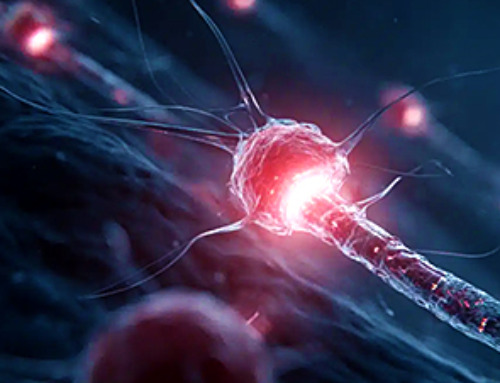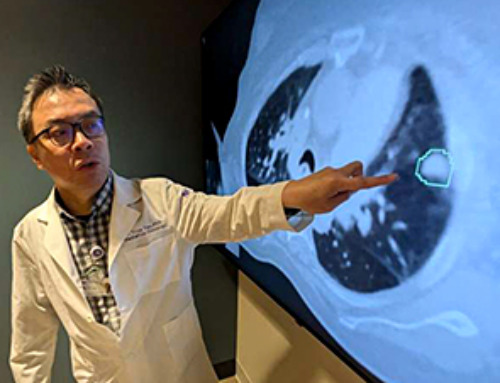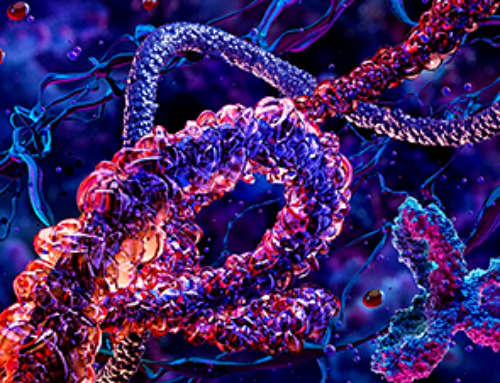When we need to recharge, we might take a vacation or relax at the spa. But what if we could recharge at the cellular level, fighting against aging and disease with the microscopic building blocks that make up the human body?
The ability to recharge cells diminishes as humans age or face diseases. Mitochondria are central to energy production. When mitochondrial function declines, it leads to fatigue, tissue degeneration, and accelerated aging. Activities that once required minimal recovery now take far longer, highlighting the role that these organelles play in maintaining vitality and overall health.
While current treatments for ailments related to aging and diseases like type 2 diabetes, Alzheimer’s, and Parkinson’s focus on managing symptoms, Texas A&M researchers have taken a new approach to fight the battle at the source: recharging mitochondrial power through nanotechnology.
Led by Dr. Abhay Singh, a biomedical engineering postdoctoral associate in the Gaharwar Laboratory at Texas A&M, the team has developed molybdenum disulfide (MoS₂) nanoflowers. Named because of their flower-like structure, these nanoparticles contain atomic vacancies that can stimulate mitochondrial regeneration, helping cells generate more energy.
The team published their findings in Nature Communications.
“These findings offer a future where recharging our cells becomes possible, extending healthy lifespans, and improving outcomes for patients with age-related diseases,” said Dr. Akhilesh Gaharwar, Tim and Amy Leach Professor and Presidential Impact Fellow in the Department of Biomedical Engineering at Texas A&M.

According to Gaharwar, the nanoflowers could offer new treatments for diseases like muscle dystrophy, diabetes, and neurodegenerative disorders by increasing ATP production, mitochondrial DNA, and cellular respiration. They discovered that the atomic vacancies in the nanoflowers stimulate the molecular pathways involved in mitochondrial cell replication.
Research collaborators include Texas A&M faculty and students. From the Department of Biophysics and Biochemistry, Dr. Vishal Gohil provided insights into the mechanisms that could drive the improvement of mitochondrial function.
“This discovery is unique,” Dr. Gohil said. “We are not just improving mitochondrial function; we are rethinking cellular energy entirely. The potential for regenerative medicine is incredibly exciting.”
Other Department of Biomedical Engineering contributors include Dr. Hatice Ceylan Koydemir, assistant professor, and Dr. Irtisha Singh, an affiliate assistant professor in the Department of Molecular and Cellular Medicine. Singh contributed computational analysis that revealed key pathways and molecular interactions responsible for the energy boost.
“By leveraging advanced computational tools, we can decode the hidden patterns in cellular responses to these nanomaterials, unlocking new possibilities for precision medicine,” Singh said. “It’s like giving cells the right instructions at the molecular level to help them restore their own powerhouses—mitochondria.”
The next steps for the research team include identifying a method for delivering the nanoflowers to human tissue, with the goal of eventual clinical application.
“In science, it’s often the smallest details that lead to the most profound discoveries,” Gaharwar said. “By focusing on the unseen—like atomic vacancies in nanomaterials—we are uncovering new ways to solve big problems. Sometimes, the real breakthroughs come from digging deeper and looking beyond the obvious.”
More information: Kanwar Abhay Singh et al, Atomic vacancies of molybdenum disulfide nanoparticles stimulate mitochondrial biogenesis, Nature Communications (2024). DOI: 10.1038/s41467-024-52276-8
Journal information: Nature Communications
News
Drug-Coated Neural Implants Reduce Immune Rejection
Summary: A new study shows that coating neural prosthetic implants with the anti-inflammatory drug dexamethasone helps reduce the body’s immune response and scar tissue formation. This strategy enhances the long-term performance and stability of electrodes [...]
Scientists discover cancer-fighting bacteria that ‘soak up’ forever chemicals in the body
A family of healthy bacteria may help 'soak up' toxic forever chemicals in the body, warding off their cancerous effects. Forever chemicals, also known as PFAS (per- and polyfluoroalkyl substances), are toxic chemicals that [...]
Johns Hopkins Researchers Uncover a New Way To Kill Cancer Cells
A new study reveals that blocking ribosomal RNA production rewires cancer cell behavior and could help treat genetically unstable tumors. Researchers at the Johns Hopkins Kimmel Cancer Center and the Department of Radiation Oncology and Molecular [...]
AI matches doctors in mapping lung tumors for radiation therapy
In radiation therapy, precision can save lives. Oncologists must carefully map the size and location of a tumor before delivering high-dose radiation to destroy cancer cells while sparing healthy tissue. But this process, called [...]
Scientists Finally “See” Key Protein That Controls Inflammation
Researchers used advanced microscopy to uncover important protein structures. For the first time, two important protein structures in the human body are being visualized, thanks in part to cutting-edge technology at the University of [...]
AI tool detects 9 types of dementia from a single brain scan
Mayo Clinic researchers have developed a new artificial intelligence (AI) tool that helps clinicians identify brain activity patterns linked to nine types of dementia, including Alzheimer's disease, using a single, widely available scan—a transformative [...]
Is plastic packaging putting more than just food on your plate?
New research reveals that common food packaging and utensils can shed microscopic plastics into our food, prompting urgent calls for stricter testing and updated regulations to protect public health. Beyond microplastics: The analysis intentionally [...]
Aging Spreads Through the Bloodstream
Summary: New research reveals that aging isn’t just a local cellular process—it can spread throughout the body via the bloodstream. A redox-sensitive protein called ReHMGB1, secreted by senescent cells, was found to trigger aging features [...]
AI and nanomedicine find rare biomarkers for prostrate cancer and atherosclerosis
Imagine a stadium packed with 75,000 fans, all wearing green and white jerseys—except one person in a solid green shirt. Finding that person would be tough. That's how hard it is for scientists to [...]
Are Pesticides Breeding the Next Pandemic? Experts Warn of Fungal Superbugs
Fungicides used in agriculture have been linked to an increase in resistance to antifungal drugs in both humans and animals. Fungal infections are on the rise, and two UC Davis infectious disease experts, Dr. George Thompson [...]
Scientists Crack the 500-Million-Year-Old Code That Controls Your Immune System
A collaborative team from Penn Medicine and Penn Engineering has uncovered the mathematical principles behind a 500-million-year-old protein network that determines whether foreign materials are recognized as friend or foe. How does your body [...]
Team discovers how tiny parts of cells stay organized, new insights for blocking cancer growth
A team of international researchers led by scientists at City of Hope provides the most thorough account yet of an elusive target for cancer treatment. Published in Science Advances, the study suggests a complex signaling [...]
Nanomaterials in Ophthalmology: A Review
Eye diseases are becoming more common. In 2020, over 250 million people had mild vision problems, and 295 million experienced moderate to severe ocular conditions. In response, researchers are turning to nanotechnology and nanomaterials—tools that are transforming [...]
Natural Plant Extract Removes up to 90% of Microplastics From Water
Researchers found that natural polymers derived from okra and fenugreek are highly effective at removing microplastics from water. The same sticky substances that make okra slimy and give fenugreek its gel-like texture could help [...]
Instant coffee may damage your eyes, genetic study finds
A new genetic study shows that just one extra cup of instant coffee a day could significantly increase your risk of developing dry AMD, shedding fresh light on how our daily beverage choices may [...]
Nanoneedle patch offers painless alternative to traditional cancer biopsies
A patch containing tens of millions of microscopic nanoneedles could soon replace traditional biopsies, scientists have found. The patch offers a painless and less invasive alternative for millions of patients worldwide who undergo biopsies [...]
